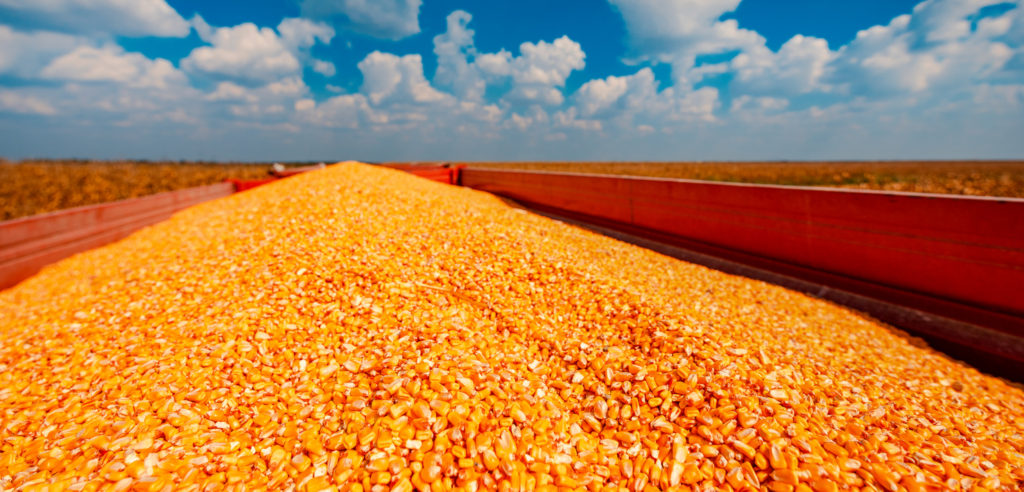
The Situation: In the next 10-20 years we will need to feed a growing global population of over Nine Billion people.
The Question: Do we know what is required to grow 300 bu Corn & 125 by Soybeans? Are our soils capable? Are we capable of managing the agronomic requirements?
The average annual corn yield increase in the United States is 1.5%. If we take the current average of 180 bu/ac and add a 1.5% yield increase in 10 years, you would have a yield of 209.36 bu/ac.
If you want to be a competitive/progressive producer and target a 3% annual yield increase, in 10 years you would be at a yield of 244.09 bu/ac.
For soybeans, it takes 5 pounds of nitrogen (N) to produce 1 bushel of soybeans. A soybean plant can produce 60% of its N needs by itself. For a 70 bu/ac soybean crop it takes 350# of N per acre to produce the crop. The soybean plant will produce 140# of N, and the soil organic matter can be responsible for another 90# of N/acre. (A general rule of thumb is that soil organic matter (O.M.) can produce 30#N for every 1 % of soil O.M. depending on environmental conditions.) We will still need 50# N from another source to achieve our 60 bu/ac yield. If we wish to go up to 125 bu/ac soybean yields, then given the above numbers, we will need an additional 120# N from another source.
When we look at the nutrient requirement to produce these yields, we are looking at much higher N-P-K requirements, and given the various environmental concerns, a question to consider is if we will be allowed to apply those amounts required for this level of production.
Water requirements for grain yields at our current level of production are at the top end of what our current average annual rainfall is. If we look at the increased water requirements for the increased yields, (based on our current understanding of production requirements in gallons of water per bushel) we do not get enough annual rainfall, or have the water holding capacity in our soils to meet these requirements.
40%-60% of a plant’s nutrient and water needs fall within a 40-60 day window.
Environmental issues and legislative pressure with water quality in the Great Lakes and our waterways also will increase pressure and scrutiny on how we manage nutrient usage in crop production.
Another set of questions to consider in growing crops for higher economic yields include: “How have our soils changed over time?” and “ How have our production practices and fertilization practices changed our soils?”. In viewing historic soils test data since the early 1980’s, our soil Organic Matter values are holding, however the CEC values are changing.
When we look at the Foodweb soil analysis of our Northwest Ohio Hoytville Clay soils, the summary shows a large “Total” number of bacteria and fungi, but the level of “Active” bacteria and fungi is low.
Dr. Fred E. Below, University of Illinois, in his discussion of the “Seven Wonders of Corn”; and assuming the basics of drainage, pest and weed control, and soil pH and P&K levels are in check; listed the following items as the top influential factors. (1. Weather, 2. Nitrogen, 3. Hybrid Selection, 4. Previous Crop, 5. Plant Population, 6. Tillage Practices, & 7. Growth Regulators). In his research, he has evaluated what it takes to make a corn crop, and also shares what each individual factor contributes or can detract from a corn program. In his summary of the evaluation he states “The yield value of an individual factor or practice is relatively small compared to the combined value of combined factors.”
In getting back to our beginning situation,(In the next 10-20 years we will need to feed a growing global population of over Nine Billion people.) “Current production practices will not be enough to produce 50% higher yields in our soil. Production practices that focus only on technology of seed, mechanization, fertilizer, herbicides, fungicides, etc. will not economically achieve these high yield levels in our soil. We must look to achieve greater soil health and soil efficiencies & plant efficiencies.” – Les Widmer
Options: What is an option to help us get closer to achieving this soil health & efficiencies? According to Dr. Pettit, Texas A&M University: “ Humic substances can play a vital role in soil fertility and plant nutrition. Plants grown in soils with adequate humic acids are far less subject to stress, are healthier, and produce higher yields.”
According to Dr. Pettit, “We became distracted from the importance of organic cycling when it was discovered that soluble acidic based N-P-K fertilizers would stimulate plant growth and yields. Continued use of acidic fertilizers without adequate humic substances in the soil can and will cause serious soil health problems.”
“ We need to reconsider our approach to fertilization practices by giving higher priority to soil humus and soil life. The urgency to emphasize the importance of humic substances and their value as fertilizer ingredients has never been more important than it is today. Humus is the major soil organic component, making up 65% to 75% of the total, and its role is far in excess of the percentage it makes in the total soil mass.” – Dr. Pettit
For more information about the use of humics through X-cell technology, contract the agronomic team at Widmer & Associates, Ltd.



